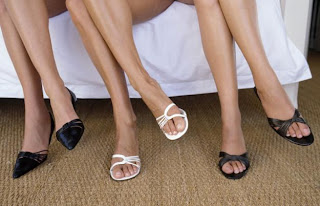Varicose veins are to the disease - 3 complained of frequent relapses, after an allergic da hypertension. Usually varicose veins more complaints regarding the cosmetic (aesthetic). Comparison of the incidence between men and women - men are 20-25%: 10-15%.
Risk Factors
Risk factor for varicose veins:
1. Hereditary / genetic.
2. Women (hormone progesterone).
Pregnancy increases susceptibility.
3. Old age.
4. Lifestyle / habits: prolonged standing, obesity, smoking.
Symptoms and Signs
Complaints varicose veins may be widening the blue veins on the surface of the skin, itching, and cause discomfort. Legs and joints can become swollen. The symptoms will be more severe when the patient is standing too long. Furthermore paabila chronic venous insufficiency can lead to damage to the skin and underlying soft tissue that can lead to more severe damage.
Examination
Physical examination is conducted in the form of:
1. Inspection.
Inspection of the skin to see any skin changes and venous dilation.
2. Palpation.
Palpation performed on the entire surface of the skin to assess venous dilation and whether earned any tenderness.
3. Percussion.
Percussion was also conducted to assess the state of venous valves.
4. Other tests to establish the diagnosis of varicose veins is to carry out or maneuver Tredelenburg menuver Perthes, Doppler, ultrasound, and MRI.
Handling
Treatment of varicose veins may include non-operative therapy. Non-operative therapy is very easy to do and requires a relatively cheaper cost but the recurrence rate is still quite high. Non-operative therapy is the use of compression stockings, sclerotherapy, and minimally invasive therapy (radiofrequency ablation, Endovenous Laser Therapy (EVLT) ). Operative therapy (Ambulatory phlebectomy, saphectomy stripping) usually give better results with a lower recurrence rate. The drawback is the cost relatively more expensive. Both non-operative therapy can cause complications and operative. Appropriate and adequate therapy will reduce the progression of varicose veins. The prognosis is good if there are no complications such as bleeding, thromboemboli, and reflux are not too heavy.
Preventing Varicose veins
1. Avoid sitting or standing for too long, change positions regularly.
2. Avoid being in a position that restricts blood circulation in the limbs (nseperti crossed legs when seated).
3. Raise the arms and legs when sitting.
4. Exercise regularly.
5. The use of compression stockings







